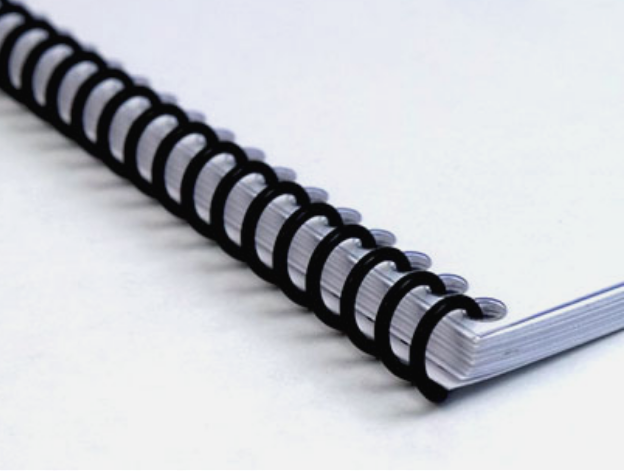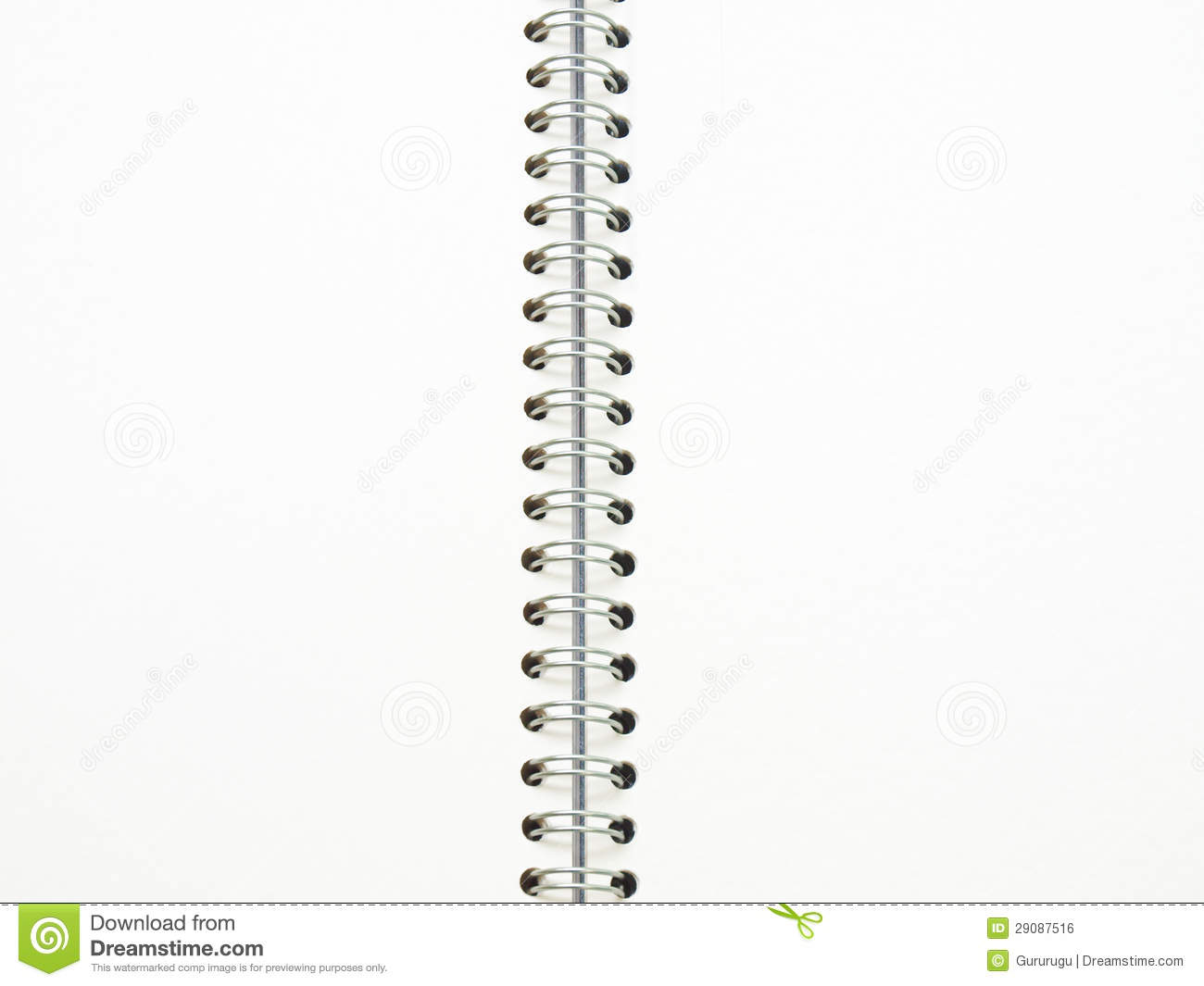
Depending on the project, the cover is often heavier, glossier, and/or a different texture than the interior pages. In most cases, the cover of a spiral bound book is created from a different paper stock than the interior pages. The more pages the book has, the larger the coil diameter must be for proper function and aesthetics. Spiral coils come in a variety of diameters to accommodate books of varying thicknesses. After a coil of appropriate pitch is fed through all the holes in the cover and pages, the coil is crimped at both ends to keep it in place.

The number of holes punched per inch is known as the pitch and usually varies between 3 and 5, with 4 holes per inch (4:1) being the most widely used pitch. Shaped like a long spring, the coil is inserted and twisted through small holes punched along the spinal edge of the book's cover and pages. The spiral binding method joins the pages and cover of a book using a coil that is made of very durable plastic. Spiral Binding and Coil Binding are interchangeable terms for the same book binding method.Ģ) How is a Spiral Bound book constructed?

Books bound with this method can lie flat for hands-free reading, making it a good choice for instruction and repair manuals, cookbooks, handbooks, guides, and other reference materials.ġ) Is Spiral Binding the same as Coil Binding? The Spiral Coil Binding method uses a spring-like coil to join the book's cover and pages as a unit, but allows them to turn freely.


 0 kommentar(er)
0 kommentar(er)
